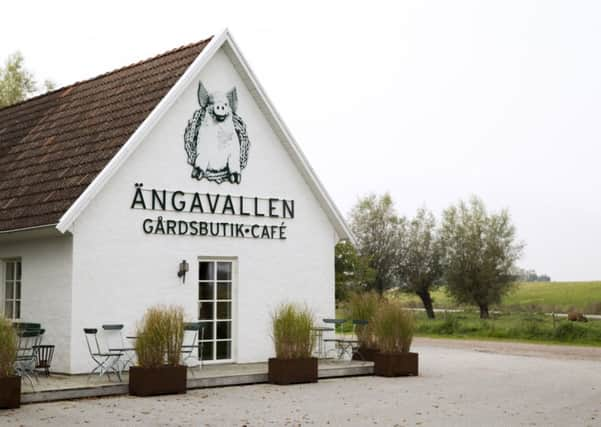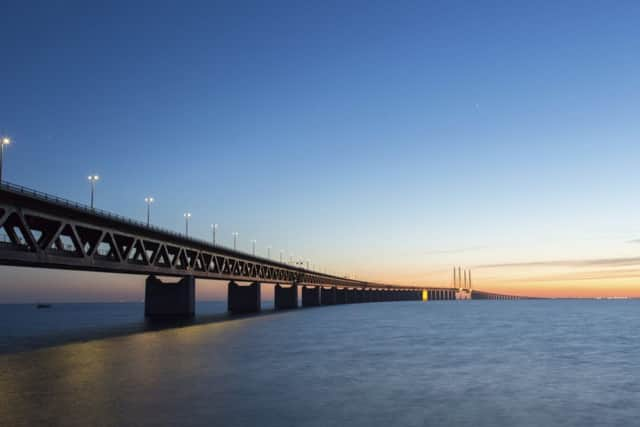Travel: Malmo, Sweden
This article contains affiliate links. We may earn a small commission on items purchased through this article, but that does not affect our editorial judgement.


IF SUCH a word exists, I’m a Scandiphile. To me, the Scandinavian countries embody inspired design, minimalist living and happy cyclists. My addiction to Nordic noir TV knows no bounds and crime writer Henning Mankell’s Inspector Wallander will always have a special place in my heart. So when a trip to Sweden that also involves food – exploring the culinary traditions of Skåne in the southern region of Oresund – comes up, I don’t hesitate; my bags are packed before you can say “Tack”.
Flying from Edinburgh to Copenhagen, it is then a train ride from the airport across the dramatic Oresund Bridge, which crosses the Oresund Strait between Denmark and southern Sweden (it’s a regular commute for those who live in Denmark but work in Sweden and vice versa). At almost five miles, it is the longest combined road and rail bridge in Europe (and it’s the location that brought Swedish detective Saga Noren and Copenhagen cop Martin Rohde to our attention in stylish TV thriller The Bridge.) In just 20 minutes I’m in Malmö, the third-largest city in Sweden, and giddy at the thought of having crossed “that” bridge.
Advertisement
Hide AdAdvertisement
Hide AdNext stop is hotel Ängavallen, part of an organic farm in the surrounding countryside. The beautiful red-brick building is set around a gravel courtyard. I do a little jump for joy at the sight of my minimalist room, all whites and greys with a walk-in rain shower and the comfiest bed.


In the dining room, exposed brickwork and old gardening tools add to a sense of times gone by. The meal in the organic restaurant, however, is a 21st-century delight, with much of the food coming from the farm and restaurant gardens.
The following morning we drive to Hallakra Vineyard, on a hilltop in the northern part of the Trelleborg countryside. Run by Lotta and Hakan Hansson, the winery started as a hobby but today is run as a small commercial vineyard (wine can only be sold in specialist shops in Sweden, government-controlled Systembolaget, and not even from the vineyard).
Heading south we stop off in Ystad (immediately recognisable to Wallander fans – there are even tours for diehards). The harbour village comprises narrow, medieval streets with half-timbered houses, while the impressive Brick Gothic-style Church of St Mary dates from the 1300s.
Driving through fruit country we head for the coast and Kivik. It’s a lovely setting with sandy inlets dotted along the water’s edge. We have lunch at Buhres – Sweden’s most popular fish shop, with its own restaurant and smokehouse – in a nautical-themed space with views over the Baltic. (I can just picture the good inspector here, nursing a cold pilsner and staring pensively out to the ocean.) Traditional fried herring with mashed potato and loganberries is the delicious order of the day – you can even get a takeaway version in the fast food area next door.
There is more minimalist loveliness waiting for me at hotel Logi Gamlegård in Osterlen, as well as a beautiful orangery where you can enjoy an evening drink underneath vines dripping with grapes.
We have dinner at the small rural restaurant Daniel Berlin, run by the chef who is famed in Sweden for his near-alchemical ways with food. The kitchen is alarmingly small and Berlin is as modest a man as you could ever hope to meet (he even drives us back to the hotel at the end of the evening, which apparently is not unusual).
We’re here for an extensive tasting menu, which ranges from juice of roasted parsnip and chervil capsules, through grey partridge in marrow and seaweed, to buttermilk and goat’s milk yoghurt with salty eggs and rosemary. The food is incredible, both in taste and presentation. Halfway through we decamp outside to enjoy a hot digestif around a roaring brazier under the stars; a magical experience.
Advertisement
Hide AdAdvertisement
Hide AdBack in Malmö the next day, the city is easily explored on foot and Mat-Karavan offers informative guided food walks around the central market on the square Mollevangstorget, an area packed with cultures and cuisines.
Lunch is taken at the Saltimporten Canteen by the city’s port area. There are just four ingredients used in a single dish of the day – salmon, pumpkin, orange and fennel when we visited – plus a veggie option, and diners sit at long wooden communal tables as much to people watch as eat. A walk around the city’s Western Harbour eases the guilt of more fine dining. At one time landfill, construction began in 2001 to turn the area into a sustainable village – it’s a lesson in eco living – while the nearby promenade has a dramatic view of the bridge and is a magnet for sun worshippers in summer.
Malmö itself is easy to explore, with two bustling squares in the old town, full of bars, shops and cafes perfect for enjoying another vital ingredient of Swedish culture, “Fika”. This literally means taking a break to enjoy coffee with friends. We stop at the quaint Lilla Kafferosteriet (Baltzarsgatan 24), where good coffee is a way of life.
Staying at the city’s Hotel Mäster Johan, on the edge of the old town, we are mere metres from our destination that evening. The irreverently named Bastard serves up modern European cuisine cooked in an open kitchen, while a DJ plays to a packed central bar. The Friday night we are there is buzzing. Undeniably stylish, it still has a relaxed, casual feel. We enjoy sharing plates of charcuterie and black pudding, washed down with organic wines. Dessert somehow leads on to cocktails, which seems the perfect way to round off the evening.
A food hike through the rolling farmland of Sinarpsdalen in the Bjare region with David Lindegren the next morning blows away some of the cobwebs. David and his wife Erica left city life behind in 2006 and live on a ten-hectare organic farm, raising their three children as well as cattle. The couple run a butchers and farm shop, and offer food hiking trails, culminating in lunch served in an open-sided shed on the hillside; we feast on steak tartare and drink in the views.
Our last night sees us at a local Malmö house as part of dining experience “A Slice of Swedish Hospitality” for a crayfish party. Until 1994, fishing for crayfish was forbidden until the first Wednesday in August, when the Swedes would celebrate by throwing a party. That law has been abolished, but the party spirit lives on. Crayfish and langoustine with salad and bread are washed down with beer and schnapps, pretty much until it feels that singing a Swedish song – or any song – might be quite a good idea after all. I’m sure Wallander would heartily approve.
• Norwegian flies from Edinburgh to Copenhagen, with fares starting from £42.50 one way
• Rail travel from Copenhagen airport to Malmö costs around £10
Advertisement
Hide AdAdvertisement
Hide Ad• Hotel Ängavallen: double room around £155; contact the hotel for rates for stays of more than two nights (www.angavallen.se)
• Logi Gamlegård: double room with breakfast around £80 (www.logigamlegard.se)
• Hotel Mäster Johan: double room with breakfast around £132 (www.masterjohan.se)
• Bastard (www.bastardrestaurant.se)
• Daniel Berlin (www.danielberlin.se/en), lunch set menu around £50; dinner set menu, around £100
• Saltimporten Canteen (www.saltimporten.com)
• Hallakra Vineyard (www.hallakra.com)
• Food hiking with the Lindegrens (www.matvandring.se)
• A Slice of Swedish Hospitality (www.guide.visitskane.com) from around £70 per person
• VisitSweden (www.visitsweden.com); Skane (www.visitskane.com/en)
• Booking.com offers last-minute accommodation deals (www.booking.com)